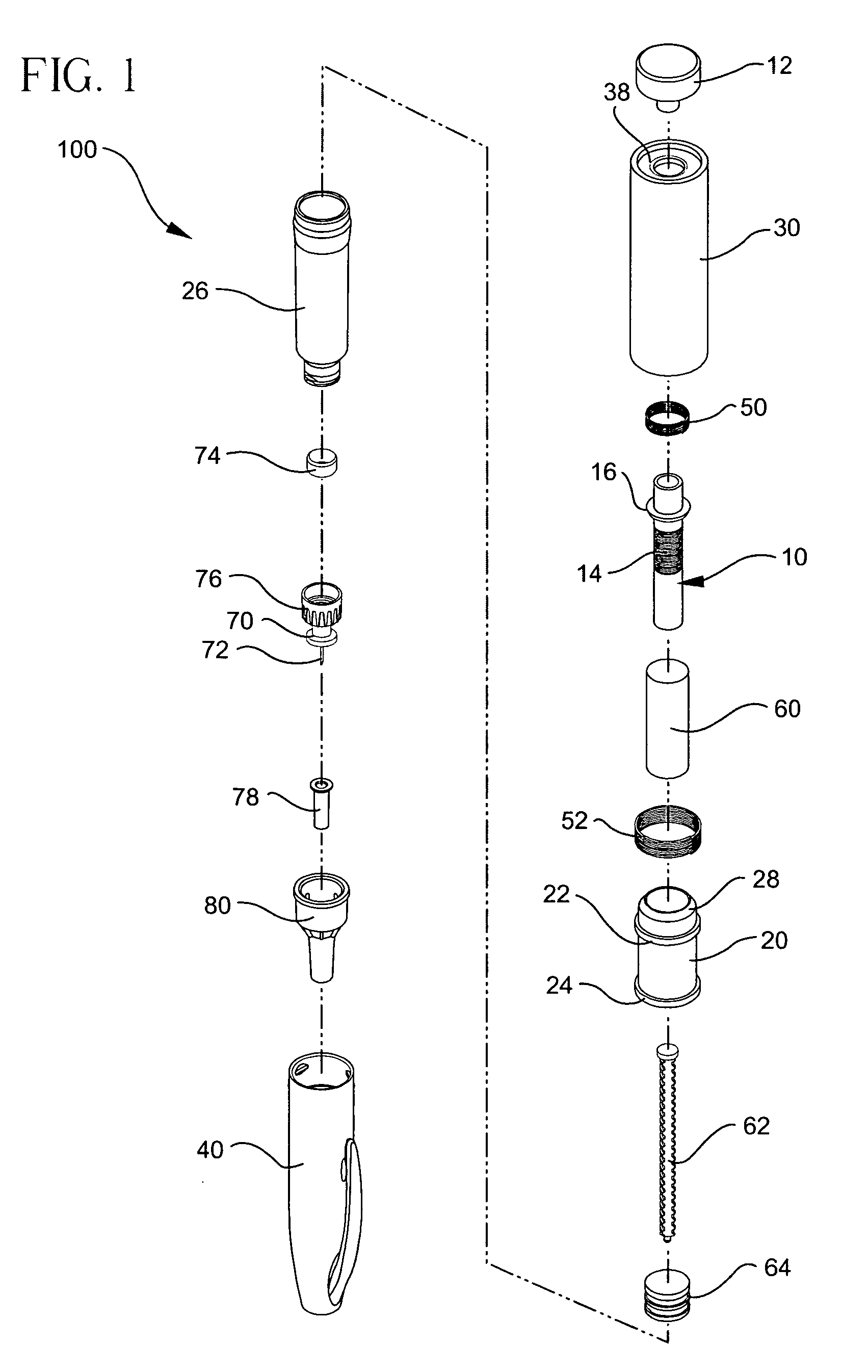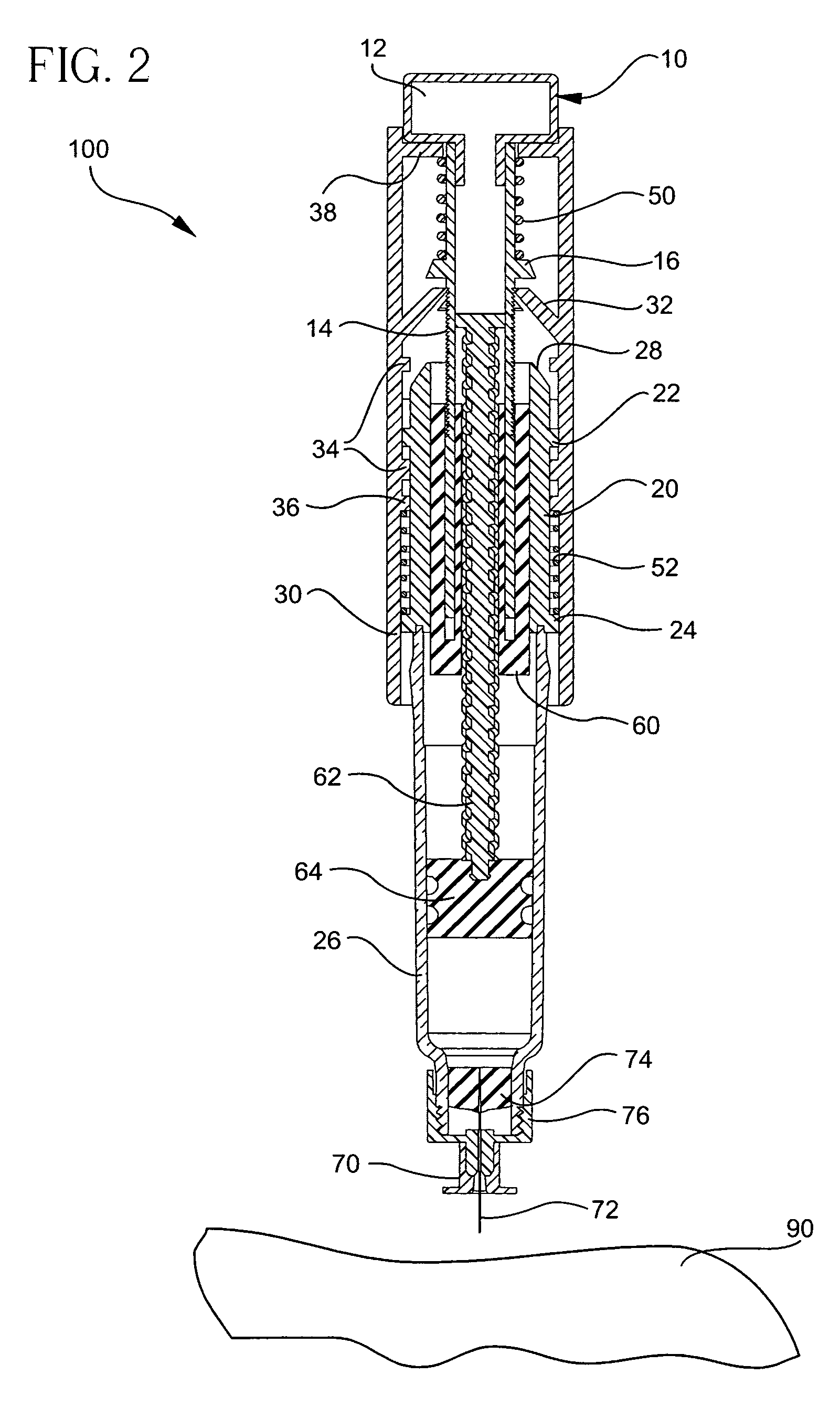Injector device with force lock-out and injection rate limiting mechanisms
a technology of injection rate and injection device, which is applied in the direction of injection syringes, intravenous devices, automatic syringes, etc., can solve the problems that the typical injection system used for subcutaneous delivery is not believed to be optimal for the general population of self-injectors
- Summary
- Abstract
- Description
- Claims
- Application Information
AI Technical Summary
Benefits of technology
Problems solved by technology
Method used
Image
Examples
Embodiment Construction
[0029] In FIG. 1, an exemplary embodiment of the present invention is shown. FIG. 1 is an exploded view illustrating an example of a device assembly according to an embodiment of the present invention, and FIGS. 2 through 5 are cross-sectional side views of the device of FIG. 1 in sequential operating positions. Specifically, FIG. 2 illustrates the device in a pre-injection / dialed-in position, FIG. 3 illustrates the device in a pre-injection / dialed-out position, FIGS. 4A and 4B illustrate the device in an in-use position, and FIGS. 5A and 5B illustrate the device in a post use position. Each position is described in greater detail below. FIGS. 6 and 7 are perspective views illustrating an assembled and uncapped device, and an assembled and capped device, respectively, according to an embodiment of the present invention.
[0030] In the embodiment of the present invention shown in FIGS. 1 through 5, an injection device, exemplified by a pen injector device 100, comprises a plunger 10, ...
PUM
 Login to View More
Login to View More Abstract
Description
Claims
Application Information
 Login to View More
Login to View More - R&D
- Intellectual Property
- Life Sciences
- Materials
- Tech Scout
- Unparalleled Data Quality
- Higher Quality Content
- 60% Fewer Hallucinations
Browse by: Latest US Patents, China's latest patents, Technical Efficacy Thesaurus, Application Domain, Technology Topic, Popular Technical Reports.
© 2025 PatSnap. All rights reserved.Legal|Privacy policy|Modern Slavery Act Transparency Statement|Sitemap|About US| Contact US: help@patsnap.com



